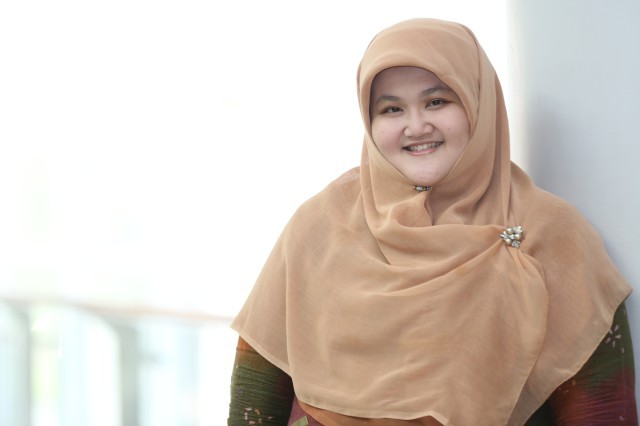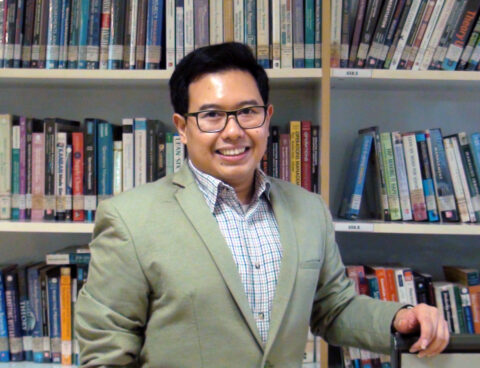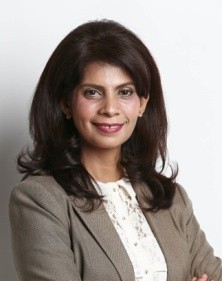Case Document
PT NEW HOPE INDONESIA OPENING NEW OPPORTUNITY OF THE DAY-OLD CHICKS (DOC) PRODUCT
GARUDA INDONESIA: WINNING CUSTOMER'S HEART THROUGH GARUDA INDONESIA EXPERIENCE
March 2005, it had never been easy for Emirsyah Satar as he appointed as the CEO of Garuda Indonesia when the company’s total debt reached up to US$845 million with a negative cash flow, with only 60% load factor level, and on time performance (OTP) away below the standard of 85%. In order to achieve the Quantum Leap 2011-2015, the transformation is highly needed. The things are more complicated when several Indonesia NGOs, such as Kontras and Jaringan Komunitas Aktivis HAM (Network of Human Rights Activists) forced Garuda Indonesia to unravel the case of Munir, Indonesian human right activist who was killed in the Garuda plane during the flight from Jakarta to Amsterdam. At that time, the fate of Garuda Indonesia as Indonesia’s Flag Carries was still unclear, and the road to be a reputable airline seemed long and endless, will Emir able to gain the trust back from the customer and develop the service of Garuda Indonesia by offering new experience to the customers?
MARTHA TILAAR SPA EXPRESS (A) – A NEW SPA EXPERIENCE
The raising of middle class in Indonesia who is remarked by more active, simple, concern about health and appearance brings opportunity for Martha Tilaar Group to serve this class with different new beauty service concept.
“The urban people lifestlye spend most of their times at work or mall. This lifestyle brings the opportunity to introduce new quality concept of spa treatment offered more to mass market”, said-Wulan Tilaar
Martha Tilaar Spa Express (MTSE) fulfills the needs of such middle class customer by offering a number of relaxation of spa treatment. Eventhough Express means shorter time than regular time spa treatment, but Martha Tilaar Express is supported by professional and skillful therapist and used the high quality spa treatment product. By opening the Martha Tilaar Spa Express in malls, it is easier for customers or spa lovers to enjoy the service.
THE DEVELOPMENTS OF THE ‘LOCAL CONTENT REQUIREMENT’ IN INDONESIA
This study investigates the potential ramifications of the implementation of a ‘local content requirement’ (LCR) law for electronic products in Indonesia. The law has been deemed “protectionist policy” by some and possibly in violation of WTO trade agreements. The Government of Indonesia (GOI), however, has maintained that its implementation is necessary to prevent the country simply becoming a market for these products. Indonesia hopes to have a greater stake in the manufacture or research and design of these products.
PRIME DAY: A CASE OF FAILURE AND SUCCESS
In the first few hours of July 12, 2016, the Amazon’s “Prime Day” event went through a computer glitch that did not allow customers to add items in their shopping cart – leaving customers unhappy and dissatisfied. The disgruntled customers brought their retaliation to the social media by complaining, making negative comments, using negative hashtags, mentioning Amazon, etc. A new hashtag was created: #PrimeDayFail!
The Prime Day is a self-made occasion created by Amazon only for its members. By paying annual fee as much as $99, members are promised to have deals and bargains, much like the Black Friday or Cyber Monday event. Launched in 2015, the Prime Day events had never been satisfying for customers. In 2015, despite the revenue success, the 2015 Prime Day still left many customers unhappy with the deals – the deals were either sold out, or considered junks or unwanted products. Customers’ retaliation in social media yielded over 40,000 negative mentions. In 2016, Amazon promised to offer better deals than any other Amazon’s event history – yet problems still occurred. While sales were considered higher than the previous year, Amazon still received bad reps from unhappy customers.
Two consecutive fails of Prime Day seem to contradict with what Amazon believes in: customer experience. Customer experience is not just a strategy to Amazon, it is its purpose. Amazon believes that customer experience is far more important than financial reports. On other domains, Amazon is one of the most successful companies when dealing with customer experience, as indicated by continuously creating innovative and effective ways in delivering products its customers. However, the two service failures of its Prime Day event have tarnished its reputation to some extent.
SWARGALOKA: EMBARKING THE HERITAGE JOURNEY
Swargaloka was first established in 17th of June 1993, by Suryandoro, a graduate of ISI (Institusi Seni Indonesia/Indonesian Institute of the Arts) located in Yogyakarta. They moved to Jakarta in the late 1990s as the founders move to Jakarta for their new career. An avid dancer himself, Suryandoro first intended Swargaloka as an establishment to prepare future generation of dancers. He received full support from his family who consists of gifted artists and dancers. Suryandoro’s wife, Dewi Sulastri, is one of the world dance maestros with a beautiful voice. The mother of four has produced dozens of new dances and performances. Some of the well-known dances of her creations Srimpi Retno Utama (1989), Bondan Suko Asih (1989), Bedaya Dewi Sri (2003), Bedoyo Aji Soko (2008), Bedoyo Tri Sabdo Tunggal Indonesia (2009), and Bedoyo Merah Putih (2009). She was awarded as the first female director and dancer by Museum Rekor Indonesia (MURI) in 2008. Their son, Bathara Saverigadi Dewandoro, was also awarded a world record title as the youngest male Javanese dance choreographer in 2013.
One of his most notable creations is called “Gama Gandrung” (Perjalanan Gandrung), a dance which tells a story of gandung dance journey from Banyuwangi, Jawa Timur. “Gama Gandrung” was first performed at Gedung Kesenian Jakarta on 11th of June, 2014.
Swargaloka was first established as an answer to the needs of having an organization that promotes and cultivates the traditional culture among the young generations. Along the road, Swargaloka has gained both national and international recognition through its various performances. At first, Swargaloka was named Swargaloka Art Department. Along its journey, it became Swargaloka Foundation and PT Gita Swargaloka.
This case discusses Swargaloka’s journey from its first establishment. Despite reaching its 24th year in 2017, Swargaloka still has several issues that it needs to solve to be able to survive as a performing-art group. Its audience numbers remain stagnant, and despite attempting to collaborate with and get funding from various institutions, including the government, Suryandoro still found that the organization is still struggling to make the ends meet. This is due to the facts that conducting a performance is a costly endeavor whereas the ticket sales may not always be sufficient to cover the costs of production.
Moreover, Suryandoro also believes that packaging the performance to be more dynamic, attractive, and communicative will enable them to target the younger audiences. However, even though Swargaloka has put significant efforts to repackage a wayang orang performance, it still has not reached a significant number of audiences.
VAN GOGH MUSEUM: A DIGITALLY ENGAGED MUSEUM
In 2014, the Van Gogh Museum (VGM) had hopes to continue its mission to enrich and inspire as many people as possible by giving access to the museum’s entire collection and knowledge on Vincent van Gogh. In order to achieve this mission, the museum had come up with strategies that made use of the ever-growing digital world, through its web strategy and social media. These strategies were aimed to help the museum reach out to as many of its visitors and non-visitors as possible, and develop constant relationship with them by creating dialogue.
However, like any other businesses, threats and challenges were apparent in the way. The reinstated photography ban by the museum might seem to cause certain threat to the way the museum was going. Especially with the trending term of ‘selfie’ in the digital world in that same year, leading to the birth of the ‘Museum Selfie Day’ project, there was high chance the museum’s strategy might suffer.
TRYING TOO HARD TO FIT IN – THE USE OF VIRAL MEMES AS A MARKETING TOOL
This case study seeks to analyze the marketing trends that companies can use to their advantage, and which to solidly avoid, unless done with laser precision. It should provide insight into the perceptions that consumers place upon a company, and how upsetting those perceptions can lead to alienation and isolation.
It focuses particularly on attempts by established companies and institutions to establish or re-establish meaningful communications.
THE NEW ERA OF ADVERTISING FOR DIGITAL PUBLISHERS IN INDONESIA
This study investigates trends of advertising in Indonesia's digital publishers. There has been a marked shift in advertising forms which has changed the business of digital publishers in the country. Digital publishers in Indonesia started about 18 years ago, when Detik.com first went online. To support the publishing, they needed advertisers. They had been using what we now call ‘conventional’ advertising, consisting of banners and pop-up advertising placement. However, as the number of digital publishers keeps growing in Indonesia, this type of advertising is slowly being left behind by the publishers. In order to compete with each other, they needed to create something new in order to advertise, that would both attract the advertisers and their consumers. This was when the concept of ‘native’ advertising started to rise.
E-MONEY PENETRATION IN INDONESIA: THE CHALLENGE OF CONSUMER BEHAVIOR AND MISCONCEPTIONS
As Indonesian central bank, Bank Indonesia launched a campaign to create a cashless society. E-money is a sort of solution for the ‘un-bankable’ society of Indonesia, and for those who often conduct banking transactions, e-money can play a role as complementary of other non-cash media such as credit cards, debit cards, checks, etc.
This campaign was based on the fact that Indonesian people do more often conduct non-cash transactions compared to people in other ASEAN countries, which accounts for more than 50%. Therefore, Bank Indonesia needs to encourage the use of non-cash alternatives in Indonesia.
By encouraging non-cash transactions, the country will be able to reduce the use of currency, which makes it more efficient and saves the budget of money printing and storing. Bank Indonesia also believes that non-cash transactions can be successfully implemented because it is more secure, more practical, and more efficient. Besides, by implementing non cash-transactions, Bank Indonesia will be able to control the circulation of money in the community.
In Indonesia, the e-money market is still wide open, and there are still many potential usages that have not been explored. The actual growth rate of e-money use has been significant over time, both in the number of cards issued and in the transactions using e-money. Each year e-money transactions have grown by 120 percent.
However, according to data from Bank Indonesia, until now growth in the use of e-money is still slow, which is approximately 5 percent. Growth per year is only approximately 0.3 percent to 0.5 percent. Growth is still considered slow because there are still many people in Indonesia who do not use e-money, whereas only approximately 9 percent of the Indonesian population uses e-money.
According to the Indonesian Central Bank (2014), electronic money is a means of transaction/payment that has the following elements: (1) it is issued based on the value of money deposited by users with the issuer; (2) the value of the money is deposited electronically in a medium such as a server or chip; (3) it is used as a means of payment with merchants who are non-issuers of electronic money; and (4) the value of the electronic money deposited by the user and managed by the issuer does not play the role of savings, as defined in banking rules and regulations.
The main purpose of the created e-money is to provide convenience in the transaction; the user does not need to spend cash and wait for change when shopping. In addition, the time required is quite short because the cash does not have to be counted, and signatures or PIN numbers for regular use debit and credit cards are not required.
Several types of transactions are covered by e-money, (1) daily transactions to a payment on a convenience outlet stores, bookstores, gas stations, and fast food restaurants, (2) e-commerce transactions via online shops, (3) transactions for public transportation: buses, commuter rail lines and highways. This study discusses the two types of transactions, namely the use of e-money for daily transactions in physical outlets and transactions in public transportation.
At the beginning, the e-money player is very eager to communicate with prospects and customers in its own way, but this has not been an effective way of communication. Consumers do not gain a full understanding and therefore cannot view as a whole the advantages of e-money as a payment instrument that is easy and practical.
The use of e-money for transportation was more successful than for transactions at the outlet. The reason is because consumers are forced to switch to this payment instrument en masse, and it is filled with government regulations. However, in practice, there are many consumer complaints that are perceived, not because of technical problems with the operation of e-money cards but rather due to a lack of understanding, which has an impact on the interest of consumers in continuing to use this payment tool.











